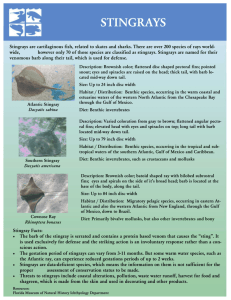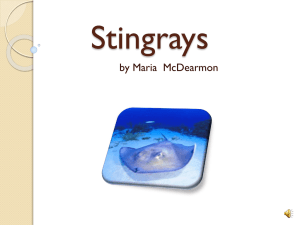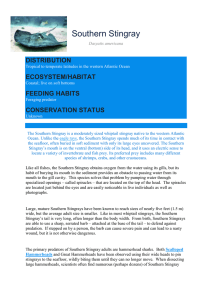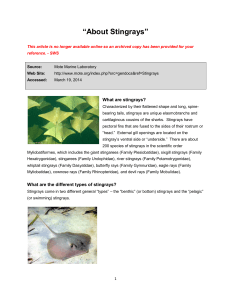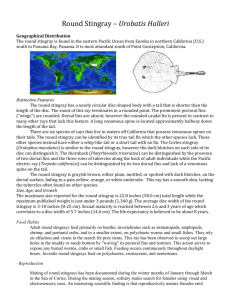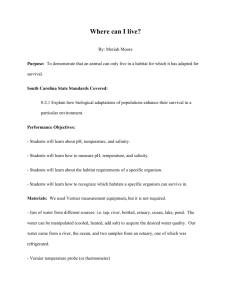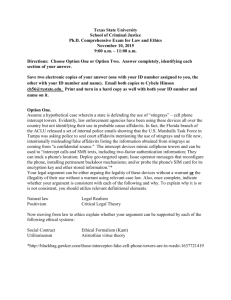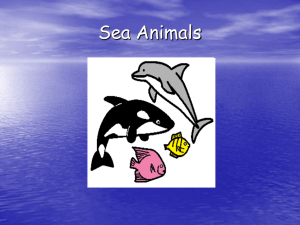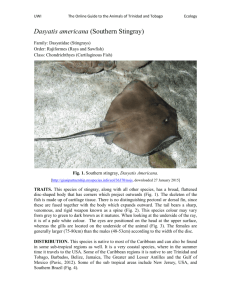Stingrays
advertisement
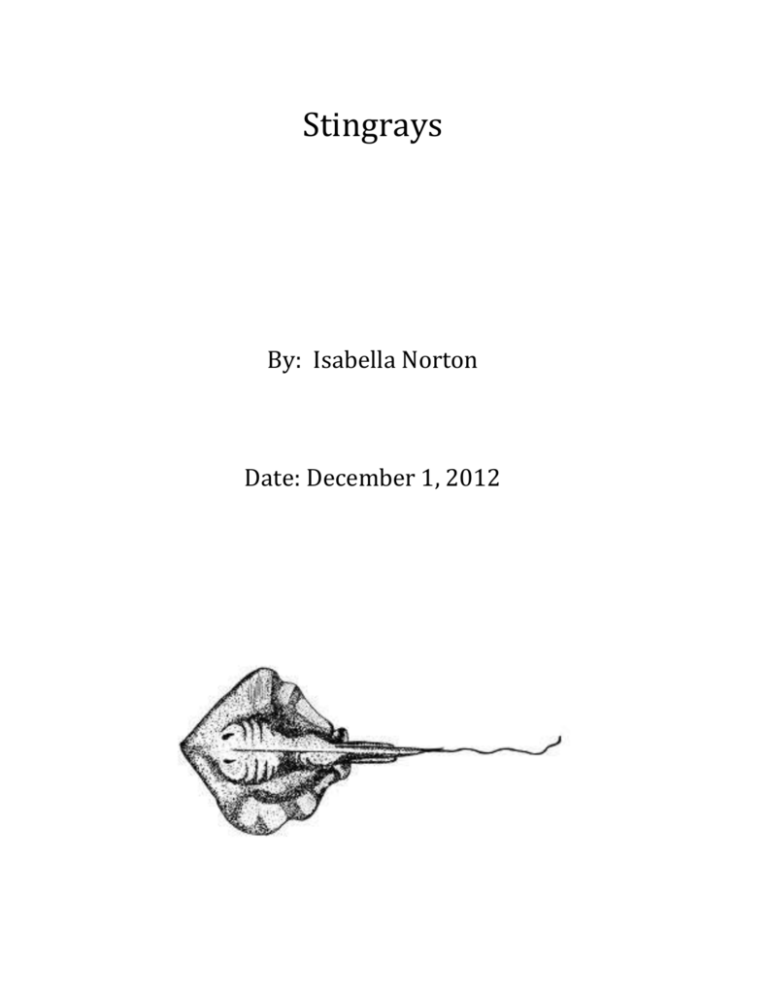
Stingrays By: Isabella Norton Date: December 1, 2012 Stingrays Adaptations Stingrays have adapted to their environment by being able to camouflage from their prey. The shape of their bodies allows them to glide in water and hide in the sand for a long time. Also, stingrays have eyes on the top of their bodies. This allows them to see their prey while they are in the sand. Stingrays like fish breathe underwater. However, stingrays have a special opening behind their eyes called a spiracle. This opening allows water into their bodies and exit through their gills. This process allows stingrays to eat and breathe at the same time. Lastly, the stingray’s tail is used as a weapon to defend itself. If threatened, stingrays inject poison into the enemy using their tail. Habitat Stingrays live in many of the oceans around the worlds such as the Black Sea, Mediterranean and the Pacific and Atlantic oceans. Usually, stingrays are found in shallow sandy waters where most people see them in the wild. In California the bat and Round stingray can be found up and down the coast of the Pacific Ocean .The Bat Ray is more common in Northern California and the Round stingray is more visible in Southern & Baja California. Appearance The stingray is usually a shade of grey or beige like the ocean floor. They have a smooth body with their eyes on top and their mouths underneath. Their tail can grow as long as 35cm. Some species have more than 1 stinger, while some others have none. Their total body length can be as long as 6.5 ft. and they can weigh as much as 790 pounds. Diet Stingrays are known to be carnivores. They use electrical sensors on the body to find their prey and attack it. Many stingray species have jaws and rows of teeth that allow them to eat shellfish like clams, oysters and muscles. Stingrays also have a diet that includes worms, shrimp, crabs and squid. Something Special Although not very popular or common, stingrays can be eaten. In Korea, fermented stingray is known to be a delicacy. The body is the only part that can be eaten. The tail and poison sacs are thrown away, since they could be deadly. Bibliography Author Unknown, “5 Crazy, Weird, Bizarre Korean Foods for the Brave.”[Online]Available http://seoulistic.com/korean-food/5-crazy-weird-bizarre-korean-foods-for-brave November 30,2012. Author Unknown, “Marine Sportfish Identification: Rays.”[Online]Available http://www.dfg.ca.gov/marine/mspcont6.asp December 1, 2012. Author Unknown, “Stingrays.”[Online]Available http://www.miamisci.org/oceans/coralreef/predators/8stingray.html December 1, 2012. Author Unknown, “Wild Animals A-Z, Fish, Stingrays.”[Online]Available http://animal.discovery.com/fish/stingray December 1, 2012. Piercy. Andrew. “How Fish Use Adaptations.”[Online]Available http://www.flmnh.ufl.edu/fish/education/adapt/adapt.htm December 1, 2012.

